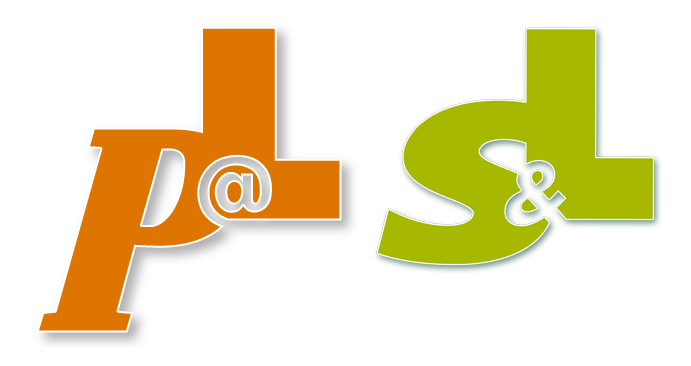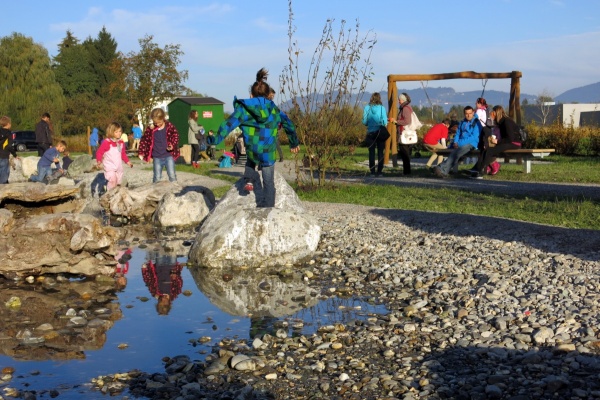Tell me, mum, who is actually allowed to control playgrounds?
If we looked on the Internet at "www.frag-mutti.de", we would probably not get ....


YOUR FORUM FOR PLAY, SPORTS UND LEISURE AREAS

Six years ago in the Austrian Federal State of Vorarlberg, the playground law came into effect. It’s time to have a closer look at the effects this law has had.
What empirical knowledge was collected and what are the successful criteria required which prompt the implementation of open spaces in local communities? And which topics should be given more consideration in future?
In the year 2009 the Vorarlberg Federal State Parliament unanimously agreed to the creation of the playground law with the goal of contributing towards an open and child-friendly society. Thanks to the law, children should have far more opportunities to test and develop their physical, intellectual and social skills through outdoor play.
The playground law encourages the municipalities in Vorarlberg to continue maintaining sufficient playgrounds and open spaces for play, and, if necessary, to construct them provided there are no other existing, suitable outdoor play opportunities. It refers to, for example, natural streams, meadows, woods, parks and sports facilities, village squares, etc. Therefore, communities should decide upon concepts which show the necessary playgrounds and open spaces in the local area. When preparing the playground concepts, the community must ensure the participation of the population and, in particular, that of children and youths, in the process.
“Children and their needs must be pushed to the forefront of society,” stressed Governor Wallner. This will lead to better quality of life for families altogether, and will create an open and supportive climate, according to Wallner.
Funding as an incentive
In order to convey the concept design and the implementation of the necessary investment measures to the communities in an attractive way, financial support is being awarded provided certain criteria are met. The state of Vorarlberg is offering local authorities potential grants of up to 70% for the development of a play area concept. Investment projects are being supported with funding of between 30% and 70% of the project cost, dependent on the qualifying criteria being met.
It became clear that a combination of the legislation linked with a high funding quota is an attractive proposition. Since its introduction, 43 of the 96 Vorarlberg local authorities have decided upon their play area concept, and a further 21 local authorities are currently processing or developing their concepts. In the space of six years over 60% of Vorarlberg local authorities have intensively engaged themselves with play areas and open spaces for children and young people. On average around 20% of young people up to the age of 18 in a community are reached by each play area concept, and approximately 6%-8% of the total population of a community. The state of Vorarlberg has invested around €3,500,000 in play area funding since 2009.
Quality in investment projects through skilled process support
By involving town planning and investment experts, as well as with the assistance of children and young people, numerous attractive play areas and open spaces have been created. Particular emphasis was placed on a ‘closer to nature’ design during the planning stage, as well as the chance to create an area that enabled the congregation of several generations in one place.
Take the Frastanz community, for example, a community near the town of Feldkirch, in which a generation park was created in the middle of the community. The previously rather unattractive site has now been accepted by the town’s entire population. For the children and young people it is a diverse play area which is close to nature and allows free play and a degree of independence. For the adults it is a place for small markets, playing boules or can be used as an area to relax.
The Rankweil Community is a clear, successful example of how it is both possible and desirable to have play opportunities in a town centre. A play area for children, a feel-good spot for visitors of the restaurant trade in the surrounding area, as well as a venue for the community have all been created here. Not an easy task in the planning stages when all of these various requirements must be satisfied. Good intentions, a willingness to co-operate and sometimes conflict resolution on the part of all those involved are needed, as well as a degree of flair from the planning experts. The project was successfully completed two years ago.
The “Am Moosbach” nature playground in the Lustenau market community shows how important it is to recognise local strengths and resources, that is, to highlight local qualities and to adapt them to visitors’ needs. This can suffice in improving functionality and in making a location attractive (again). According to M.A. Karlheinz Rüdisser, governor and the person with political responsibility in the area: “What’s crucial is that we design our living space in such a way that children and young people have diverse play areas and open spaces within easy reach of where they live, where they can learn using all their senses through the medium of play.”
Yet how exactly do you target the real needs of the population?
Play area concepts as door openers for increased participation
When children and young people are given the chance to be actively involved in concept design and investment projects, local politics and administration are often presented with a better idea of the thoughts and drive of the young generation. Positive momentum emerges from the process that benefits community development by creating better cultural awareness of participation that benefits children, young people and citizens.
Participation with “side effects”
Viewing the world through the eyes of a child – this is often a new experience for those involved in the planning and administrative aspects of a community. During the course of creating a play area concept other social needs come to light. For example, when observing children from a primary school in Rankweil, those children made their spatial requirements and educational needs known. They wrote their own story book and used the proceeds to finance a multilingual library. In the Vorarlberg local authority of Satteins the children came up with the idea of establishing their own children’s café during a presentation of the results of the play area and open space concept. The Mayor supported them in their endeavours. The market village of Götzis also realised that you can’t develop part of a neighbourhood without active participation and that an open space, which has already been established, cannot simply be relocated. The results of the participation have an effect on the local authority’s educational policy.
It requires listening carefully, recognising the needs and the will of the community, a professional approach to providing support for these processes and financing them. For the sustainable development of a community, lively processes and the ability to deal with conflict and to co-operate are necessary across all levels.
Open space as interdisciplinary topic
Play areas and open spaces cannot be considered in isolation. Many points of contact with other departments relevant to the planning process arise when the concept is viewed as a whole, such as, for example, traffic planning, conservation or hydraulics, to name but a few.
Roads present a particular problem for children, as they often prevent them from reaching a place without the help of an adult. A good interlinking open space within walking distance that takes into consideration safety aspects is key in ensuring that the project is well received. When developing a play area concept, therefore, the route through the district plays an important role. The networked thinking and co-operation with various planning departments, such as traffic planning is, therefore, a prerequisite for the successful processing and realisation of the play area concept.
Water is an element with a particular power of attraction. Fountains and streams especially are favourite gathering and recreation spots for all generations. The Hard community at Lake Constance has managed to prove, for example, with the renaturation of the village brook, that a valuable habitat for people and nature in the middle of the locality is possible, and that these areas next to water can be revitalised once again.
Assessment and Constant Continuous Development
In 2013, four years after the introduction of the playground law in Vorarlberg, the results of the decision were evaluated. The resultant findings influenced the further development of the subsidy system, and on 1/1/2014 an updated subsidy directive came into effect. This led to more funds being made available for youth parks and niche activities, as it came to light through the community’s play area concepts that there was a necessity for a greater range of activities in the public sphere that are suitable for the younger generation, as well as diverse, local facilities to be made available. In the meantime attractive, inter-communal youth recreation areas have been created in several neighbourhoods, where importance is attached to integrating youth into the process from the outset. A further, crucial topic will be how the positive energy created in a community during the design stage can also flow into the realisation project. Good ideas shouldn’t be left to gather dust on a shelf – they need to survive!! Ideas end up serving communities if they are based on long-term designs, and should ideally link in with other spatial design concepts.
The play and open space law passed by the Federal State of Vorarlberg created structures which make possible the ongoing realisation of steps towards creating communal free space.
The “Child-Friendly Habitat” project established by the “Children in the Middle” initiative and the land use and construction law planning department of the Vorarlberg Federal State Government continue to plan beyond the present, in co-operation with local communities, to inspire momentum and appropriate measures in the quest to network, sensitise and provide additional training for the important individuals in the process.
Experience shows that the Vorarlberg playground law has repeatedly proved beneficial for the communities and their residents. This represents the next step towards an open and child-friendly society.
Photo documentation: Hard, Rankweil and Lustenau communities, Frastanz community, KGLR